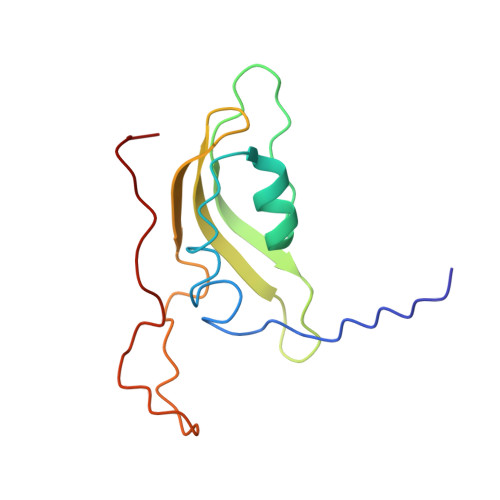The solution structure of the outer membrane lipoprotein OmlA from Xanthomonas axonopodis pv. citri reveals a protein fold implicated in protein-protein interaction.
Vanini, M.M., Spisni, A., Sforca, M.L., Pertinhez, T.A., Benedetti, C.E.(2008) Proteins 71: 2051-2064
- PubMed: 18186471
- DOI: https://doi.org/10.1002/prot.21886
- Primary Citation of Related Structures:
2PXG - PubMed Abstract:
The outer membrane lipoprotein A (OmlA) belongs to a family of bacterial small lipoproteins widely distributed across the beta and gamma proteobacteria. Although the role of numerous bacterial lipoproteins is known, the biological function of OmlA remains elusive. We found that in the citrus canker pathogen, Xanthomonas axonopodis pv. citri (X. citri), OmlA is coregulated with the ferric uptake regulator (Fur) and their expression is enhanced when X. citri is grown on citrus leaves, suggesting that these proteins are involved in plant-pathogen interaction. To gain insights into the function of OmlA, its conformational and dynamic features were determined by nuclear magnetic resonance. The protein has highly flexible N- and C- termini and a structurally well defined core composed of three beta-strands and two small alpha-helices, which pack against each other forming a two-layer alpha/beta scaffold. This protein fold resembles the domains of the beta-lactamase inhibitory protein BLIP, involved in protein-protein binding. In conclusion, the structure of OmlA does suggest that this protein may be implicated in protein-protein interactions required during X. citri infection.
Organizational Affiliation:
Center for Molecular and Structural Biology, Brazilian Synchrotron Light Laboratory, Campinas, SP, 13083-970, Brazil.














